Jul
23
2024
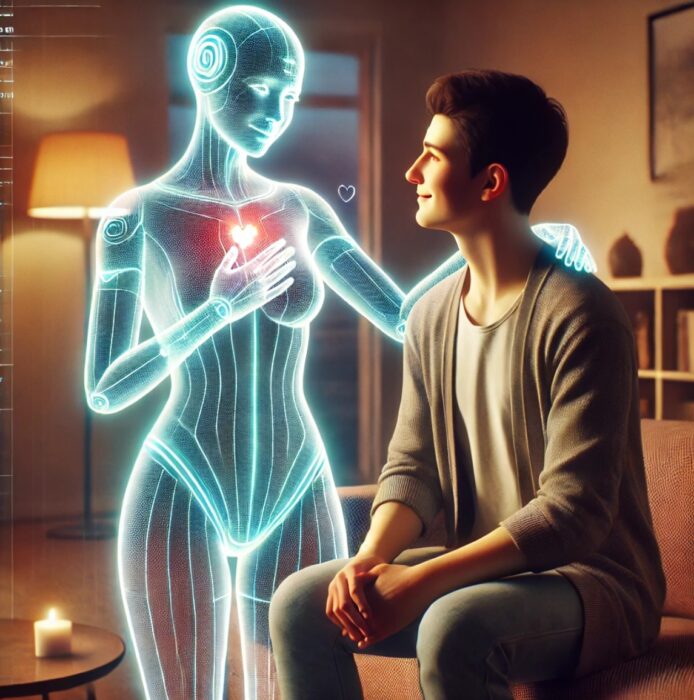 Often times the answer to a binary question is “yes”. Is artificial intelligence (AI) a powerful and quickly advancing tool or is it overhyped? Yes. Are opiates useful medicines or dangerous drugs? Yes. Is Elon Musk a technological visionary or an eccentric opportunist? This is because the world is usually more complex and nuanced than our false dichotomy or false choice simplistic thinking. People and things can contain disparate and seemingly contradictory traits – they can be two things at the same time.
Often times the answer to a binary question is “yes”. Is artificial intelligence (AI) a powerful and quickly advancing tool or is it overhyped? Yes. Are opiates useful medicines or dangerous drugs? Yes. Is Elon Musk a technological visionary or an eccentric opportunist? This is because the world is usually more complex and nuanced than our false dichotomy or false choice simplistic thinking. People and things can contain disparate and seemingly contradictory traits – they can be two things at the same time.
This was therefore my immediate reaction to the question – are AI companions a potentially healthy and useful phenomenon, or are they weird and harmful? First let me address a core neuropsychological question underlying this issue – how effective are chatbot companions, for just companionship, or for counseling, or even as romantic partners? The bottom line is that the research consistently shows that they are very effective.
This is likely a consequence of how human brains are typically wired to function. Neurologically speaking, we do not distinguish between something that acts alive and something that is alive. Our brains have a category for things out there in the world that psychologists term “agents”, things that are acting on their own volition. There is a separate category for everything else, inanimate objects. There are literally different pathways in the brain for dealing with these two categories, agents and non-agents. Our brains also tend to overall the agent category, and really only require that things move in a way that suggest agency (moving in a non-inertial frame, for example). Perhaps this makes evolutionary sense. We need to know, adaptively, what things out there might be acting on their own agenda. Does that thing over there want to eat me, or is it just a branch blowing in the wind.
Humans are also intensely social animals, and a large part of our brains are dedicated to social functions. Again, we tend to overcall what is a social agent in our world. We easily attribute emotion to cartoons, or inanimate objects that seem to be expressing emotions. Now that we have technology that can essentially fake human agency and emotion, this can hack into our evolved algorithms which never had to make a distinction between real and fake agents.
Continue Reading »
Jul
08
2024
If either of the two presumptive nominees for the major political parties in the US are elected in November they will be the oldest person ever to be inaugerated as president. What implications does this have? As a neurologist who sees patients every workday of various ages, evaluates them, and explicitly investigates the effects of aging on their function, I have some thoughts.
The first thing to realize is that aging affects different people differently. Especially once people get north of 40 you start to see significant and growing divergence in how well people age, in terms of their health and various aspects of functioning. I have seen many patients in their 90s who are completely sharp and fully functional or have just specific issues to deal with, but are overall healthy. I have also seen patients in their 50s who are wrecked and suffering from various aspects of declining health.
This divergence is partly due to the luck of genetics, and partly due to lifestyle. Some people have a chronic illness that dramatically affects their aging. Others may have suffered an injury with long term effects that get more challenging with age. While others have engaged in one or more poor lifestyle choices and have paid a heavy toll. Chronic alcohol use disorder, for example, can be devastating, adding years or decades to one’s apparent age. Smoking also takes its toll.
For these reasons, what we can say about a person based upon just a number is actually quite limited. We can make statistical comments, but that’s all. Even there, we can only describe what is typical, but there are exceptions. There are, for example, so-called “super agers” who do not develop the typical brain changes that most people do with age.
Continue Reading »
Jun
17
2024
 This is a great scientific question because it challenges how we ask and answer scientific questions. Are animals conscious? This is a question discussed in a recent BBC article that piqued my interest. They eventually get to a question that they should have opened with – how do we specifically define “consciousness”? We can’t answer questions about an alleged phenomenon unless we know what it is. Ideally we would have an operational definition, a list of inclusion and exclusion criteria that need to be met to fit the definition.
This is a great scientific question because it challenges how we ask and answer scientific questions. Are animals conscious? This is a question discussed in a recent BBC article that piqued my interest. They eventually get to a question that they should have opened with – how do we specifically define “consciousness”? We can’t answer questions about an alleged phenomenon unless we know what it is. Ideally we would have an operational definition, a list of inclusion and exclusion criteria that need to be met to fit the definition.
So I am going to start with this question – how do we define consciousness? I think there are at least two different contexts here. In medicine we use the term to refer to different states in people. We know, from our own experience, that humans are conscious, and from one point of view we define consciousness as what humans experience. We assume other fully functioning humans are conscious because we are, and there is no reason to think that other beings with brains similar to our own have a fundamentally different phenomenon driving their behavior. In fact part of consciousness is a theory of mind, which is the ability to think about what other beings think and feel.
So when we talk about consciousness in humans the question revolves around the health and functioning of the brain. Someone might be unconscious, or comatose, or vegetative. We label these as “disorders of consciousness”. We might also discuss consciousness in the context of healthy altered states, such as sleeping. Here we do have very specific technical definitions, based upon neurological examination. However, even here our definition is being challenged by new technology, such as functional MRI scanning, which may shows signs of subtle consciousness in someone who does not show signs on exam.
Continue Reading »
May
30
2024
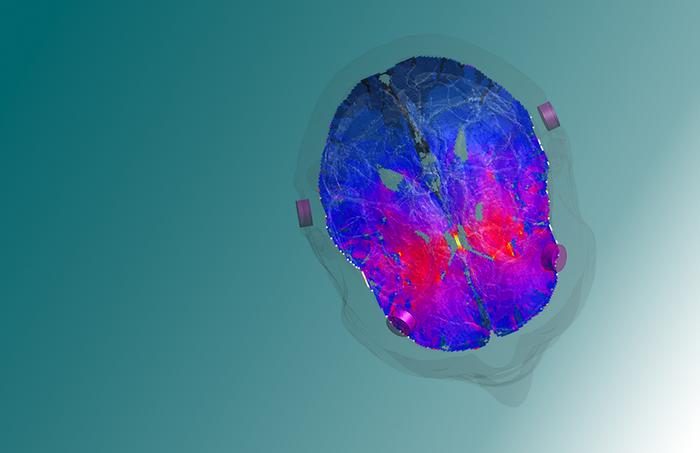 We are rapidly entering the era of neuromodulation – using electrical and magnetic fields in order to increase or decrease the activity of specific regions and circuits in the brain. Such treatments are already shown to be effective in treating some Parkinson’s symptoms, depression, OCD, migraines, and other neurological and psychiatric conditions. Computational models of brain anatomy and the connectome have dramatically increased the utility of neuromodulation. We are still on the steep part of the curve, and it will be interesting to see how far this modality goes in the next 10-20 years.
We are rapidly entering the era of neuromodulation – using electrical and magnetic fields in order to increase or decrease the activity of specific regions and circuits in the brain. Such treatments are already shown to be effective in treating some Parkinson’s symptoms, depression, OCD, migraines, and other neurological and psychiatric conditions. Computational models of brain anatomy and the connectome have dramatically increased the utility of neuromodulation. We are still on the steep part of the curve, and it will be interesting to see how far this modality goes in the next 10-20 years.
But there is one technical challenge – reaching the deep brain structures where many of the potentially targeted conditions can be found. The problem is that any electrical or magnetic field has to go through the more superficial brain tissue to get to the deeper structures. The current solution to this problem is to use invasive techniques, such as placing wires in the brain. So called “deep brain stimulation” is now done routinely, using guided stereotactic techniques, but a non-invasive way to accomplish the same goal could lead to a dramatic increase in the utility of neuromodulation.
Researchers have now published a proof of concept study looking at what they call transcranial temporal interference stimulation (tTIS). The idea of tTIS is actually rather simple – it exploits the phenomenon of interference. Waves, regardless of what kind of waves they are, display certain core behaviors, one of which is interference. Wave are basically additive. If a peak hits a peak you get a bigger peak. If the peak of one wave coincides with the trough of another wave, the two waves will cancel each other out. This is how noise cancelling headphones work, for example.
Continue Reading »
May
14
2024
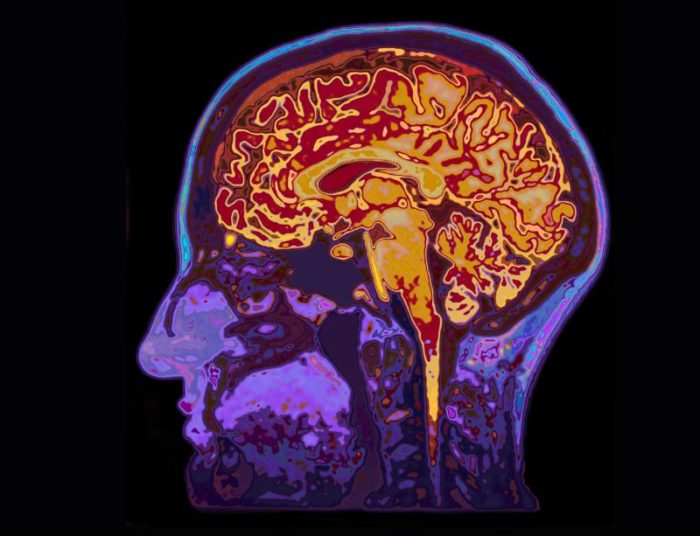 One of the most difficult situations that a person can face is to have a loved-one in a critical medical condition and have to make life-or-death medical decisions for them. I have been in this situation many times as the consulting neurologist, and I have seen how weighty this burden can be on family members. Advanced directives are helpful, but they cannot predict every possible situation or anticipate every medical nuance, so still, decisions have to be made.
One of the most difficult situations that a person can face is to have a loved-one in a critical medical condition and have to make life-or-death medical decisions for them. I have been in this situation many times as the consulting neurologist, and I have seen how weighty this burden can be on family members. Advanced directives are helpful, but they cannot predict every possible situation or anticipate every medical nuance, so still, decisions have to be made.
One thing is also clear – the better we are able to predict outcomes, the easier decision-making becomes. Uncertainty is the most difficult aspect of choosing, for example, whether or not to withdraw life-saving interventions. For this reason there has been a lot of research trying to help do exactly that – predict outcomes in various situations of neurological injury, so at least family members can make the most informed decision possible.
But one thing that doctors do not have, as we are fond of saying, is a crystal ball. We cannot say what an individual’s outcome will be, only make statistical statements based on predictive variables. Still, statistics can be extremely helpful.
A recent study adds to the literature addressing this question. They look at the outcomes of 146 adults with severe traumatic brain injury admitted to an ICU. They looked at whether or not there was withdrawal of life-sustaining treatment (WLST) and compared the characteristics of both groups. Not surprisingly, those who were WLST + were older on average and had more severe injury. The researchers also looked at those who were WLST – (did not have withdrawal of life-sustaining treatment) and tracked their outcomes.
Continue Reading »
Apr
01
2024
I have not written before about Havana Syndrome, mostly because I have not been able to come to any strong conclusions about it. In 2016 there was a cluster of strange neurological symptoms among people working at the US Embassy in Havana, Cuba. They would suddenly experience headaches, ringing in the ears, vertigo, blurry vision, nausea, and cognitive symptoms. Some reported loud whistles, buzzing or grinding noise, usually at night while they were in bed. Perhaps most significantly, some people who reported these symptoms claim that there was a specific location sensitivity – the symptoms would stop if they left the room they were in and resume if they returned to that room.
These reports lead to what is popularly called “Havana Syndrome”, and the US government calls “anomalous health incidents” (AHIs). Eventually diplomats in other countries also reported similar AHIs. Havana Syndrome, however, remains a mystery. In trying to understand the phenomenon I see two reasonable narratives or hypotheses that can be invoked to make sense of all the data we have. I don’t think we have enough information to definitely reject either narrative, and each has its advocates.
One narrative is that Havana Syndrome is caused by a weapon, thought to be a directed pulsed electromagnetic or acoustic device, used by our adversaries to disrupt American and Canadian diplomats and military personnel. The other is that Havana Syndrome is nothing more than preexisting conditions or subjective symptoms caused by stress or perhaps environmental factors. All it would take is a cluster of diplomats with new onset migraines, for example, to create the belief in Havana Syndrome, which then takes on a life of its own.
Both hypotheses are at least plausible. Neither can be rejected based on basic science as impossible, and I would be cautious about rejecting either based on our preexisting biases or which narrative feels more satisfying. For a skeptic, the notion that this is all some kind of mass delusion is a very compelling explanation, and it may be true. If this turns out to be the case it would definitely be satisfying, and we can add Havana Syndrome to the list of historical mass delusions and those of us who lecture on skeptical topics can all add a slide to our Powerpoint presentations detailing this incident.
Continue Reading »
Mar
01
2024
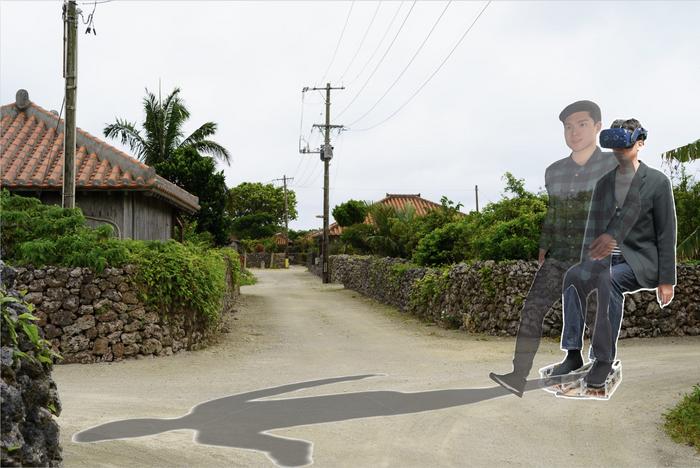 When I use my virtual reality gear I do practical zero virtual walking – meaning that I don’t have my avatar walk while I am not walking. I general play standing up which means I can move around the space in my office mapped by my VR software – so I am physically walking to move in the game. If I need to move beyond the limits of my physical space, I teleport – point to where I want to go and instantly move there. The reason for this is that virtual walking creates severe motion sickness for me, especially if there is even the slightest up and down movement.
When I use my virtual reality gear I do practical zero virtual walking – meaning that I don’t have my avatar walk while I am not walking. I general play standing up which means I can move around the space in my office mapped by my VR software – so I am physically walking to move in the game. If I need to move beyond the limits of my physical space, I teleport – point to where I want to go and instantly move there. The reason for this is that virtual walking creates severe motion sickness for me, especially if there is even the slightest up and down movement.
But researchers are working on ways to make virtual walking a more compelling, realistic, and less nausea-inducing experience. A team from the Toyohashi University of Technology and the University of Tokyo studied virtual walking and introduced two new variables – they added a shadow to the avatar, and they added vibration sensation to the feet. An avatar is a virtual representation of the user in the virtual space. Most applications allow some level of user control over how the avatar is viewed, but typically either first person (you are looking through the avatar’s eyes) or third person (typically your perspective is floating above and behind the avatar). In this study they used only first person perspective, which makes sense since they were trying to see how realistic an experience they can create.
The shadow was always placed in front of the avatar and moved with the avatar. This may seem like a little thing, but it provides visual feedback connecting the desired movements of the user with the movements of the avatar. As weird as this sounds, this is often all that it takes to not only feel as if the user controls the avatar but is embodied within the avatar. (More on this below.) Also they added four pads to the bottom of the feet, two on each foot, on the toe-pad and the heel. These vibrated in coordination with the virtual avatar’s foot strikes. How did these two types of sensory feedback affect user perception?
Continue Reading »
Dec
12
2023
 Scientists have developed virtual reality goggles for mice. Why would they do this? For research. The fact that it’s also adorable is just a side effect.
Scientists have developed virtual reality goggles for mice. Why would they do this? For research. The fact that it’s also adorable is just a side effect.
One type of neuroscience research is to expose mice in a laboratory setting to specific tasks or stimuli while recording their brain activity. You can have an implant, for example, measure brain activity while it runs a maze. However, having the mouse run around an environment puts limits on the kind of real time brain scanning you can do. So researchers have been using VR (virtual reality) for about 15 years to simulate an environment while keeping the mouse in a more controlled setting, allowing for better brain imaging.
However, this setup is also limiting. The VR is really just surrounding wrap-around screens. But it is technically challenging to have overhead screens, because that is where the scanning equipment is, and there are still visual clues that the mouse is in a lab, not the virtual environment. So this is an imperfect setup. k
The solution was to build tiny VR goggles for mice. The mouse does not wear the goggles like a human wears a VR headset. They can’t get them that small yet. Rather, the goggles are mounted, and the mouse is essentially placed inside the goggle while standing on a treadmill. The mouse can therefore run around while remaining stationary on the treadmill, and keep his head in the mounted VR goggles. This has several advantages over existing setups.
Continue Reading »
Dec
01
2023
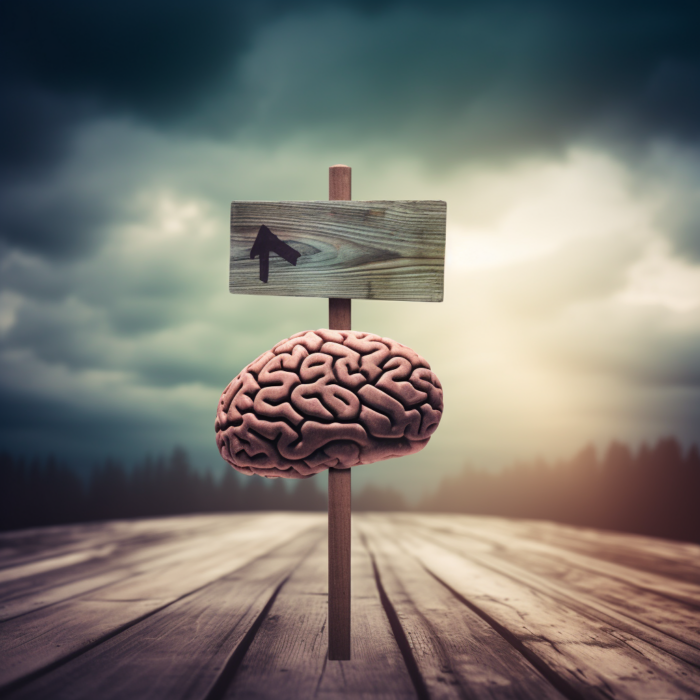 Let’s dive head first into one of the internet’s most contentious questions – do we have true free will? This comes up not infrequently whenever I write here about neuroscience, most recently when I wrote about hunger circuitry, because the notion of the brain as a physical machine tends to challenge our illusion of complete free will. Debates tend to become heated, because it is truly challenging to wrap our meat brains around such an abstract question.
Let’s dive head first into one of the internet’s most contentious questions – do we have true free will? This comes up not infrequently whenever I write here about neuroscience, most recently when I wrote about hunger circuitry, because the notion of the brain as a physical machine tends to challenge our illusion of complete free will. Debates tend to become heated, because it is truly challenging to wrap our meat brains around such an abstract question.
I always find the discussion to be enlightening, however. In the most recent discussion I detect that some commenters are using the term “free will” differently than others. Precisely (operationally) defining terms is always critical in such discussions, so I wanted to break down what I feel are the three definitions or levels of free will that we are dealing with. It seems to me that there is a superficial level, a neurological level, and a metaphysical level to free will. Language fails us here because we have only one term to refer to these very different things (at least colloquially – philosophers probably have lots of highly precise technical terms).
At the most superficial level we do make decisions, and some people consider this free will. To be clear, I am not aware of any serious thinker or philosopher who holds that we do not make decisions. There is a deeper discussion about the mechanisms of those decisions, but we do make them, we are consciously aware of them, and we can act on them. From this perspective, people are agents, and are accountable to the choices they make.
Continue Reading »
Nov
27
2023
 There are several technologies which seem likely to be transformative in the coming decades. Genetic bioengineering gives us the ability to control the basic machinery of life, including ourselves. Artificial intelligence is a suite of active, learning, information tools. Robotics continues its steady advance, and is increasingly reaching into the micro-scale. The world is becoming more and more digital, based upon information, and our ability to translate that information into physical reality is also increasing.
There are several technologies which seem likely to be transformative in the coming decades. Genetic bioengineering gives us the ability to control the basic machinery of life, including ourselves. Artificial intelligence is a suite of active, learning, information tools. Robotics continues its steady advance, and is increasingly reaching into the micro-scale. The world is becoming more and more digital, based upon information, and our ability to translate that information into physical reality is also increasing.
Finally, we are increasingly able to interface ourselves with this digital technology, through brain machine interfaces, and hybrid biological technology. This is the piece I want to discuss today, because of a recent paper detailing a hybrid biopolymer transistor. This is one of the goals of computer technology going forward – to make biological, or at least biocompatible, computers. The more biocompatible our digital technology, the better we will be able to interface that technology with biology, especially the human brain.
This begins with the transistor, the centerpiece of modern computing technology. A transistor is basically a switch that has two states, which can be used to store binary information (1s and 0s). If the switch in on, current flows through the semiconductor, and that indicates a 1, if it is off, current does not flow, indicating a zero. The switch is also controlled by a gate separated by an insulator. These switches can turn on and off 100 billion times a second. Circuits of these switches are designed to process information – to do the operations that form the basis of computing. (This is an oversimplification, but this is the basic idea.)\
This new hybrid transistor uses silk proteins as the insulator around the gates of the transistor. The innovation is the ability to control these proteins at the nano-scale necessary to make a modern transistor. Using silk proteins rather than an inorganic substance allows the transistor to react to its environment in a way that purely inorganic transistors cannot. For example, the ambient moisture will affect the insulating properties of these proteins, changing the operation of the gates.
Continue Reading »
 Often times the answer to a binary question is “yes”. Is artificial intelligence (AI) a powerful and quickly advancing tool or is it overhyped? Yes. Are opiates useful medicines or dangerous drugs? Yes. Is Elon Musk a technological visionary or an eccentric opportunist? This is because the world is usually more complex and nuanced than our false dichotomy or false choice simplistic thinking. People and things can contain disparate and seemingly contradictory traits – they can be two things at the same time.
Often times the answer to a binary question is “yes”. Is artificial intelligence (AI) a powerful and quickly advancing tool or is it overhyped? Yes. Are opiates useful medicines or dangerous drugs? Yes. Is Elon Musk a technological visionary or an eccentric opportunist? This is because the world is usually more complex and nuanced than our false dichotomy or false choice simplistic thinking. People and things can contain disparate and seemingly contradictory traits – they can be two things at the same time.
 This is a great scientific question because it challenges how we ask and answer scientific questions. Are animals conscious? This is a question discussed in a
This is a great scientific question because it challenges how we ask and answer scientific questions. Are animals conscious? This is a question discussed in a  We are rapidly entering the era of neuromodulation – using electrical and magnetic fields in order to increase or decrease the activity of specific regions and circuits in the brain. Such treatments are already shown to be effective in treating some Parkinson’s symptoms, depression, OCD, migraines, and other neurological and psychiatric conditions. Computational models of brain anatomy and the connectome have dramatically increased the utility of neuromodulation. We are still on the steep part of the curve, and it will be interesting to see how far this modality goes in the next 10-20 years.
We are rapidly entering the era of neuromodulation – using electrical and magnetic fields in order to increase or decrease the activity of specific regions and circuits in the brain. Such treatments are already shown to be effective in treating some Parkinson’s symptoms, depression, OCD, migraines, and other neurological and psychiatric conditions. Computational models of brain anatomy and the connectome have dramatically increased the utility of neuromodulation. We are still on the steep part of the curve, and it will be interesting to see how far this modality goes in the next 10-20 years. One of the most difficult situations that a person can face is to have a loved-one in a critical medical condition and have to make life-or-death medical decisions for them. I have been in this situation many times as the consulting neurologist, and I have seen how weighty this burden can be on family members. Advanced directives are helpful, but they cannot predict every possible situation or anticipate every medical nuance, so still, decisions have to be made.
One of the most difficult situations that a person can face is to have a loved-one in a critical medical condition and have to make life-or-death medical decisions for them. I have been in this situation many times as the consulting neurologist, and I have seen how weighty this burden can be on family members. Advanced directives are helpful, but they cannot predict every possible situation or anticipate every medical nuance, so still, decisions have to be made. When I use my virtual reality gear I do practical zero virtual walking – meaning that I don’t have my avatar walk while I am not walking. I general play standing up which means I can move around the space in my office mapped by my VR software – so I am physically walking to move in the game. If I need to move beyond the limits of my physical space, I teleport – point to where I want to go and instantly move there. The reason for this is that virtual walking creates severe motion sickness for me, especially if there is even the slightest up and down movement.
When I use my virtual reality gear I do practical zero virtual walking – meaning that I don’t have my avatar walk while I am not walking. I general play standing up which means I can move around the space in my office mapped by my VR software – so I am physically walking to move in the game. If I need to move beyond the limits of my physical space, I teleport – point to where I want to go and instantly move there. The reason for this is that virtual walking creates severe motion sickness for me, especially if there is even the slightest up and down movement. Scientists have developed
Scientists have developed  Let’s dive head first into one of the internet’s most contentious questions – do we have true free will? This comes up not infrequently whenever I write here about neuroscience, most recently when
Let’s dive head first into one of the internet’s most contentious questions – do we have true free will? This comes up not infrequently whenever I write here about neuroscience, most recently when  There are several technologies which seem likely to be transformative in the coming decades. Genetic bioengineering gives us the ability to control the basic machinery of life, including ourselves. Artificial intelligence is a suite of active, learning, information tools. Robotics continues its steady advance, and is increasingly reaching into the micro-scale. The world is becoming more and more digital, based upon information, and our ability to translate that information into physical reality is also increasing.
There are several technologies which seem likely to be transformative in the coming decades. Genetic bioengineering gives us the ability to control the basic machinery of life, including ourselves. Artificial intelligence is a suite of active, learning, information tools. Robotics continues its steady advance, and is increasingly reaching into the micro-scale. The world is becoming more and more digital, based upon information, and our ability to translate that information into physical reality is also increasing.




